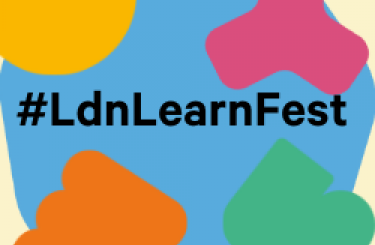Related


A blog by Rob Whitehead (Director of Strategic Projects, Centre for London) on the London Funders 'Scenarios for London’s communities in 2023 and implications for funders' report – how it intersects with the London Futures project, and what next for London?
But thinking about what might lie ahead in the future can help to guide us to where we want to go.
If 18 months working on our London Futures project has taught me anything, it’s that future gazing is a difficult, but hugely rewarding exercise. The future can often feel impossible: events or circumstances can seem to be fixed or we might fail to see constraints or challenges on the horizon. But thinking about what might lie ahead in the future can help to guide us to where we want to go.
At the start of the pandemic, some questioned the value of long term thinking in a time of acute crisis. How could we possibily figure anything out about the future when we were busy worrying about a deadly disease and all of its consequences? Thankfully though it also gave way to a new hunger to question the status quo and explore the future in new ways.
Harnessing this appetite for exploration, in September 2020 we set out five plausible scenarios in our London at a crossroads report that could each be imaginable for London within the next 30 years:
For each one we imagined a city that had steered hard towards one particular set of priorities over a sustained period: broadly these were sustainability, fairness, jobs, health and safety, and devolution. We laid out what each route might mean in terms of net zero emissions, population growth and key policy areas like flood defence, airports and housing. These scenarios helped us to have conversations with Londoners about the direction they want the city to take.. We featured them in our Your Future London website where we asked Londoners to choose between different priorities.
We were not the first to use scenarios to develop our thinking about the future. It’s been a device used for decades by major firms, as well as government agencies. More recently Transport for London has embraced scenarios to help guide decision makers through, and out of, the pandemic.. And London First, the business organisation, built on this thinking, setting out their own transport scenarios in their Transport in London report early this year.
So its no surprise then that London Funders are also using scenarios to consider how best to meet the needs of London’s communities over the next two years.
They have crafted four possible futures:
A common feature in the report’s debate is how to bring about the desirable elements and mitigate the less desirable elements of each scenario. The discussions themselves can help spot bridges across policies that previously appeared to be at odds, for example by highlighting the health benefits to everyone of cheaper public transport.
Unsurprisingly there are similarities between many of the scenarios we and others have envisioned for London. There is a scenario where London’s economic growth is pursued at all costs, at the expense of many people living in our city. The 15-minute city idea too has caught the imagination of city planners.
There is also divergence. One of London Funders’ scenarios sees the pandemic leading to our social, economic and healthcare systems becoming so overwhelmed that local authorities and citizen-led initiatives have to step in. Pessimistic perhaps, but maybe more realistic given what we now know about the healthcare backlog and likely pressure on the public finances.
Perhaps the most strikingly different scenario of the London Funders set is that of ‘Not building back’. Characterised by uncertainty, isolation and mistrust this London Funders scenario envisions a bleak future where the lives of socially excluded people are most impacted, with more extreme responses like riots and limited access to healthcare and housing for non British citizens.
Scenarios are fabrications. They are an attempt to offer different prisms on the future, to break free of our mental corridors. But they are always shaped by our assumptions, values and perspectives.
Scenarios are fabrications. They are an attempt to offer different prisms on the future, to break free of our mental corridors. But they are always shaped by our assumptions, values and perspectives. Some sets of scenarios try hard to seem equally positive (we tried this in London Futures, though almost everyone we talked to preferred either 15-minute London or our Levelled Up London options).
The London Funders’ scenarios do not attempt this, perhaps wisely. To most the clear ‘winner’ would be ‘Building back better’, while the others serve as warnings. ‘Building back better’ maps across to elements of several of our scenarios, and focuses on reorganising the economy through increased public spending and progressive taxation. It sees the capital becoming more equitable, envisioning London as a hub for green businesses with a focus on shopping local.
The likelihood is that London’s future will be a mix of all of these scenarios, but focusing on connections and regeneration as ‘Building back better’ outlines does reflect some of the thinking coming out of our London Futures work. We know that this is the direction that Londoners want to take too and later in the autumn autumn we’ll be sharing a vision for the London we want to see.

